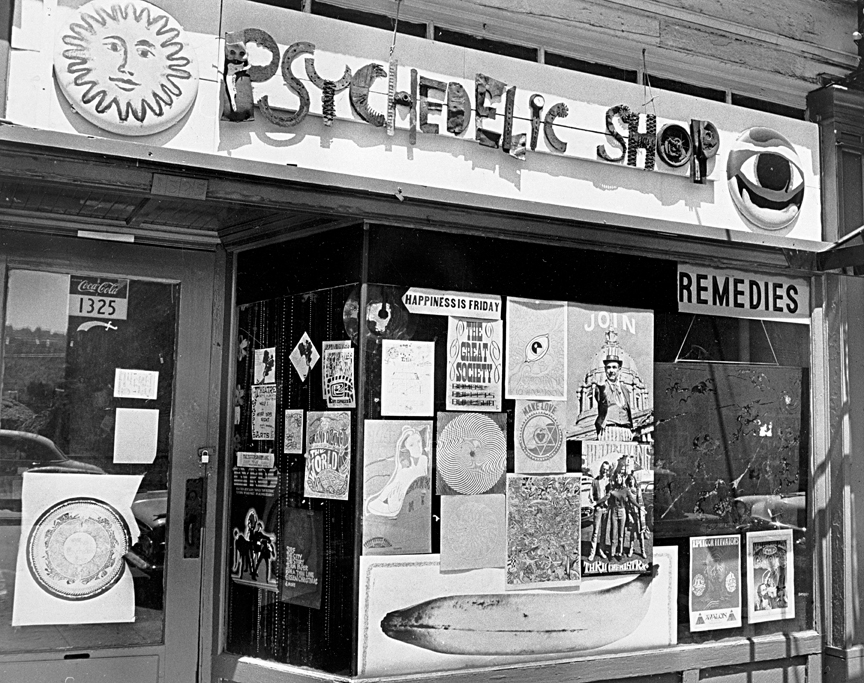- Catalog No. —
- bb002266, CN 022772
- Date —
- June 29, 1967
- Era —
- 1950-1980 (New Economy, Civil Rights, and Environmentalism)
- Themes —
- Arts
- Credits —
- CN 022772, Oregon Historical Society Research Library
- Regions —
- Portland Metropolitan
- Author —
- Unknown
The Psychedelic Shop
This photograph of The Psychedelic Shop, at 1325 SW Washington, was taken on June 29, 1967. The shop catered to a young clientele that had either grown up in Portland or had recently moved to the city.
After World War II, many artists and radicals settled in San Francisco, establishing the San Francisco Renaissance, which was made popular by the Beat writing of Alan Ginsburg and Jack Kerouac. That 1950s artistic movement was a precursor to the hippie counterculture of the 1960s. Young people in Portland flocked to coffeehouses to hear folk musicians and poets perform.
In 1965, Bob Dylan plugged in at the Newport Folk Festival in Rhode Island, leading fans and musicians to embrace a new era of folk- and acid-rock. Hippies - who were characterized by their anti-Establishment attitudes, long hair and brightly-colored clothing, use of marijuana and psychedelic drugs, communal lifestyles, and love of folk and rock music - became a major cultural force across the nation. Disillusioned with the culture of conformity and consumerism that had dominated the 1950s, young people in the 1960s sought refuge in the counterculture movement, and many left their homes.
In 1967, Dr. Timothy Leary spoke at Portland State College (now Portland State University), and the summer that followed became known as the Summer of Love in Portland. Portland became a destination for the growing population of homeless youth. Many settled in the area around Southwest Portland's Lair Hill Park, prompting city officials to institute a citywide park curfew from eleven o'clock at night until five o'clock in the morning. Local newspapers responded with series of articles on drug use, which alarmed many parents of teens. The Women's Protective Division of the Portland Bureau of Police and by the Portland Council of Churches dealt with the problems of youth runaways and drug use. The two groups differed, however, in their approach - law enforcement versus social aid - and they sometimes clashed in public settings such as City Council meetings.
The Crystal Ballroom, a downtown dancehall, became another gathering place for hippies during the late 1960s. Alan Ginsberg gave a performance there, and popular bands such as the Grateful Dead played legendary shows at the ballroom. Young people flocked to the Crystal to hear and dance to the music, see the light shows, partake in marijuana and psychedelic drugs, and feel at home amongst the crowd.
Further reading:
Valerie Brown, "Music on the Cusp: From Folk to Acid Rock in Portland Coffeehouses, 1967-1970" in Oregon Historical Quarterly 108:2 (Summer 2007)
Tim Hills, The Many Lives of the Crystal Ballroom (Portland, Ore.: McMenamins Pubs and Breweries, 1997)
Written by Eliza Canty-Jones, © Oregon Historical Society, 2007.
